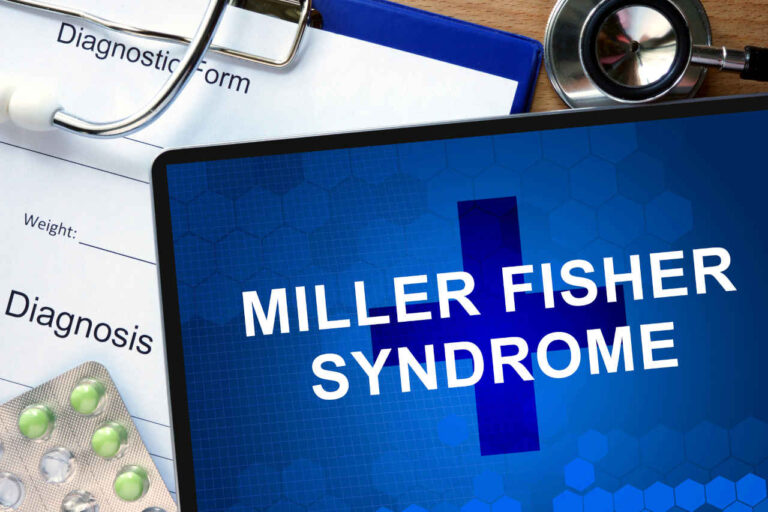
Routine tests for Guillain-Barre syndrome are cerebrospinal fluid (CSF) analysis, electromyography, and nerve conduction studies. Additional tests include an MRI (magnetic resonance imaging) or a CT (computed tomography) scan.
Speak to a Specialist About Copay Assistance
Diagnosing Guillain-Barre syndrome (GBS) can be challenging, especially during the earlier stages. GBS shares many signs and symptoms with other neurological disorders.
Moreover, the symptoms can vary from one person to another.
Before ordering a specific test for Guillain-Barre syndrome, your doctor will assess your symptoms and medical history. If they suspect GBS, they may order lab tests to check your blood sugar, electrolytes, kidney function, and liver enzymes [1].
Though these tests are of little diagnostic value, they can help rule out other causes responsible for your symptoms, such as:
- Infections
- Metabolic disorders
- Electrolyte dysfunctions
Specific Tests for Guillain-Barre Syndrome
Your doctor will likely recommend the following tests for Guillain-Barre syndrome to confirm the clinical diagnosis:
Lumbar puncture
Also called a spinal tap, this test checks your CSF for abnormalities in protein levels or for signs of infections.
Increased protein levels without an elevation in white blood cells is the characteristic feature of GBS [1]. Nonetheless, both may be normal during the first few weeks after disease onset.
During a lumbar puncture, a healthcare provider inserts a tiny hollow needle into the spinal canal in the lower back to withdraw a sample of CSF. Potential risks of a lumbar puncture include transient numbness of the lower back, bleeding, or headache.
Electromyography
When your brain tells a muscle to move, the nerve signals travel in the form of electrical waves. Electromyography measures these electrical waves.
During electromyography, tiny needles (electrodes) are inserted into the muscle. The electrodes measure electrical activity and display it on a monitor. Abnormal readings on the monitor may indicate muscle or nerve problems.
This test for Guillain-Barre syndrome can help support diagnosis in individuals with atypical signs and symptoms of other diseases.
Nerve conduction studies
Nerve conduction studies measure how fast electrical signals move down the nerves. Abnormal results may indicate nerve damage.
Other Tests for Guillain-Barre Syndrome
Imaging tests

Magnetic resonance imaging (MRI) and computed tomography (CT) scanning of the spine are not routinely used. However, they may help exclude:
- Stroke
- Spinal cord inflammation
- Cancer involving the membranes surrounding your brain and spinal cord
- Nerve root compression
- Infection of the bottom of the brain
Ultrasound imaging of peripheral nerves appears to be a promising new diagnostic tool. However, further investigation is needed to validate its use in clinical practice.
Can Guillain-Barre Syndrome Be Detected in a Blood Test?
Blood tests don’t confirm GBS diagnosis. Nonetheless, your doctor may order total blood count and blood tests for glucose, electrolytes, kidney function, and liver enzymes. These tests can help exclude medical conditions that mimic GBS. Additionally, some patients have certain antibodies that can help indicate a Guillain-Barre diagnosis.
Can an MRI Detect Guillain-Barre Syndrome?
MRI or other imaging studies are not routinely used. However, these tests can help exclude conditions like stroke or nerve root compression. Limited evidence suggests MRI may be useful as a supplementary diagnostic modality.
Get Financial Assistance
Can a CT Scan Detect Guillain-Barre Syndrome?
No. A CT scan or other imaging tests are not useful in detecting Guillain-Barre syndrome. Rather, they can help exclude other medical conditions.
What Is the Gold Standard Test for Guillain-Barre Syndrome?
Many health experts consider nerve conduction studies to be the gold standard test for Guillain-Barre Syndrome [2]. These tests measure the speed of electrical signals through a nerve.
Can the Diagnosis of Guillain-Barre Syndrome Be Delayed?
Atypical signs and symptoms may result in delayed diagnosis. Electromyography can help support diagnosis in such cases.
REFERENCES:
- Leonhard, Sonja E et al. “Diagnosis and management of Guillain-Barré syndrome in ten steps.” Nature reviews. Neurology vol. 15,11 (2019): 671-683. doi:10.1038/s41582-019-0250-9
- Smith, Nicholas et al. “Investigation of suspected Guillain-Barre syndrome in childhood: what is the role for gadolinium enhanced magnetic resonance imaging of the spine?.” Journal of paediatrics and child health vol. 50,10 (2014): E72-6. doi:10.1111/j.1440-1754.2010.01802.x













